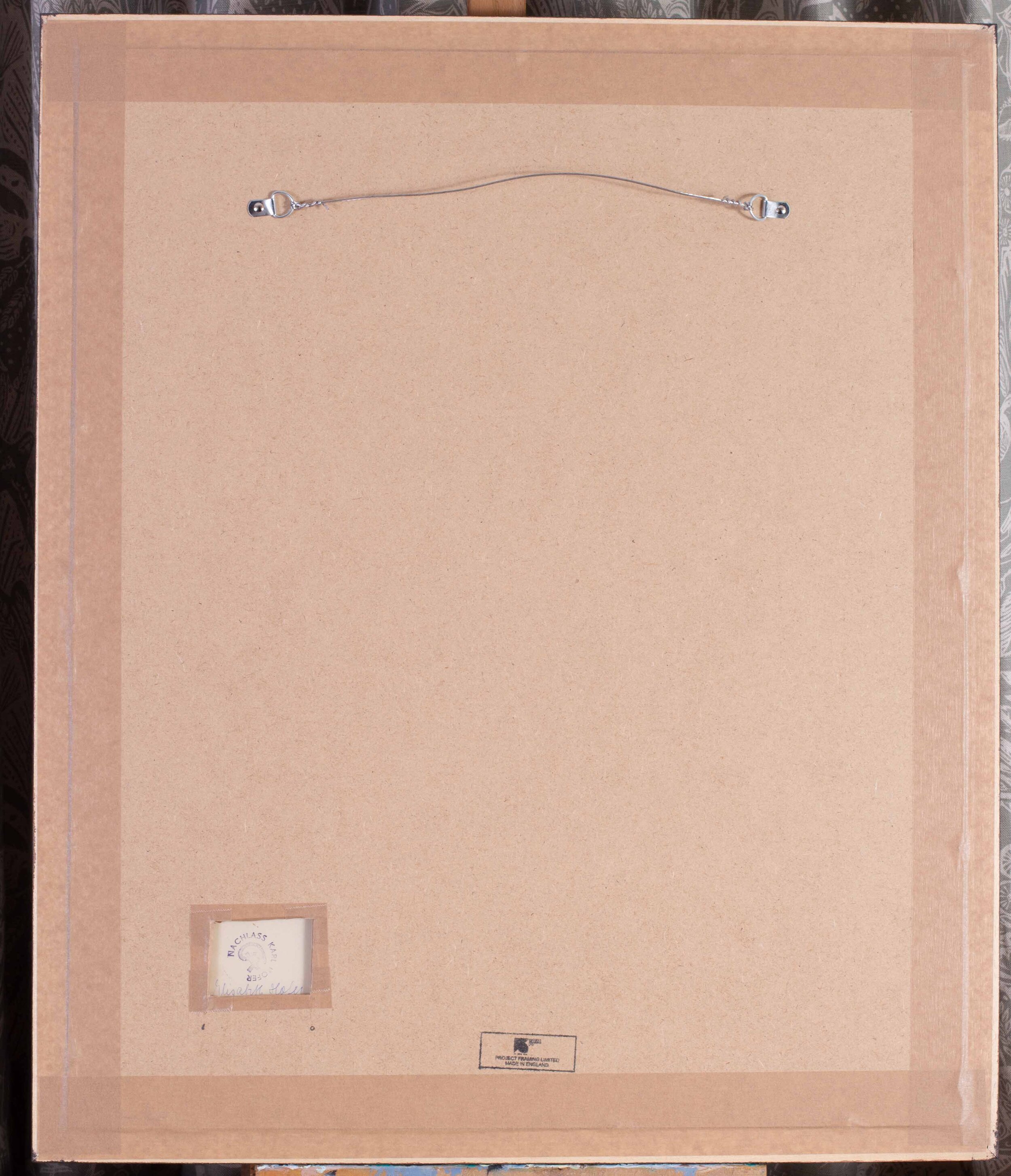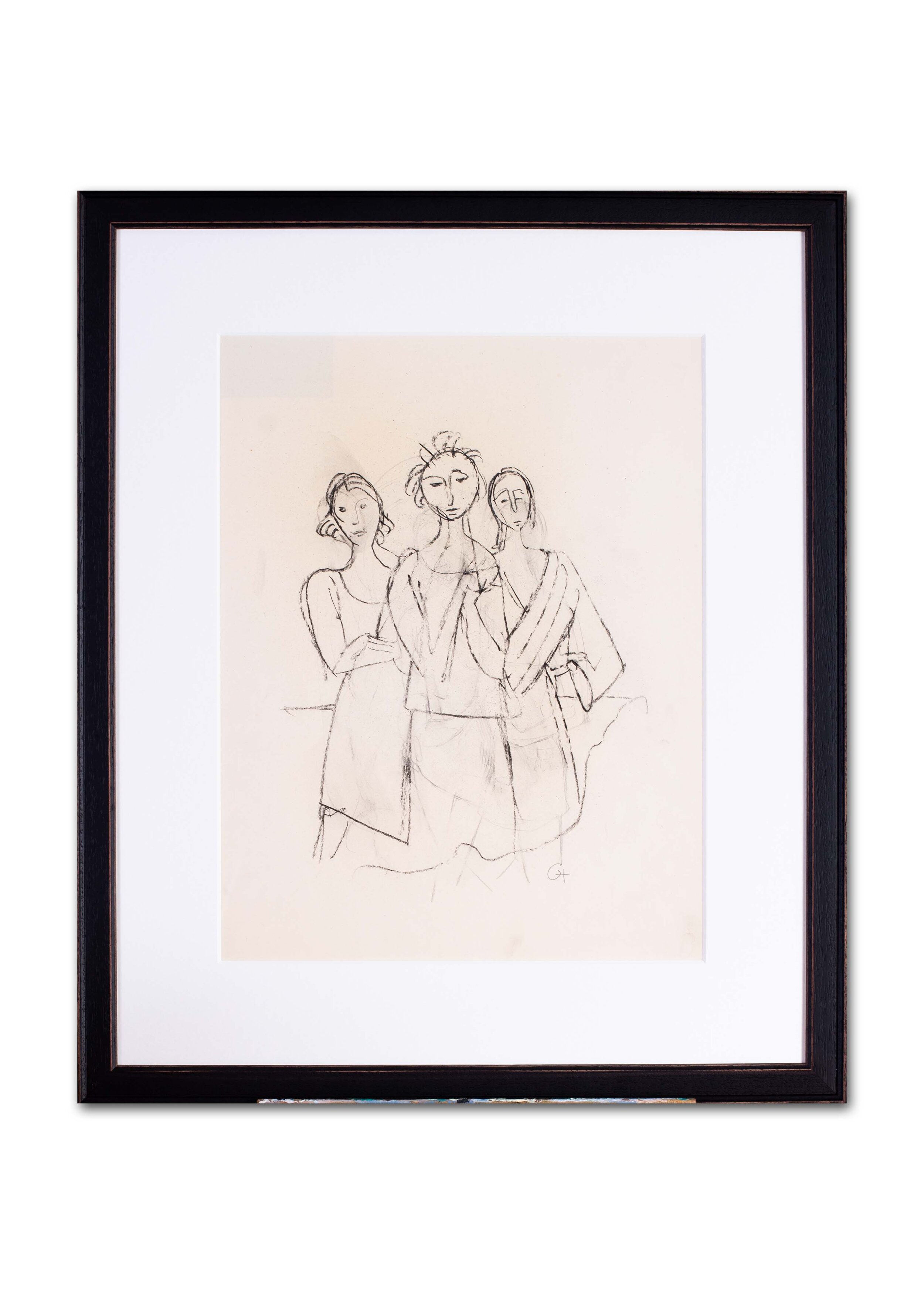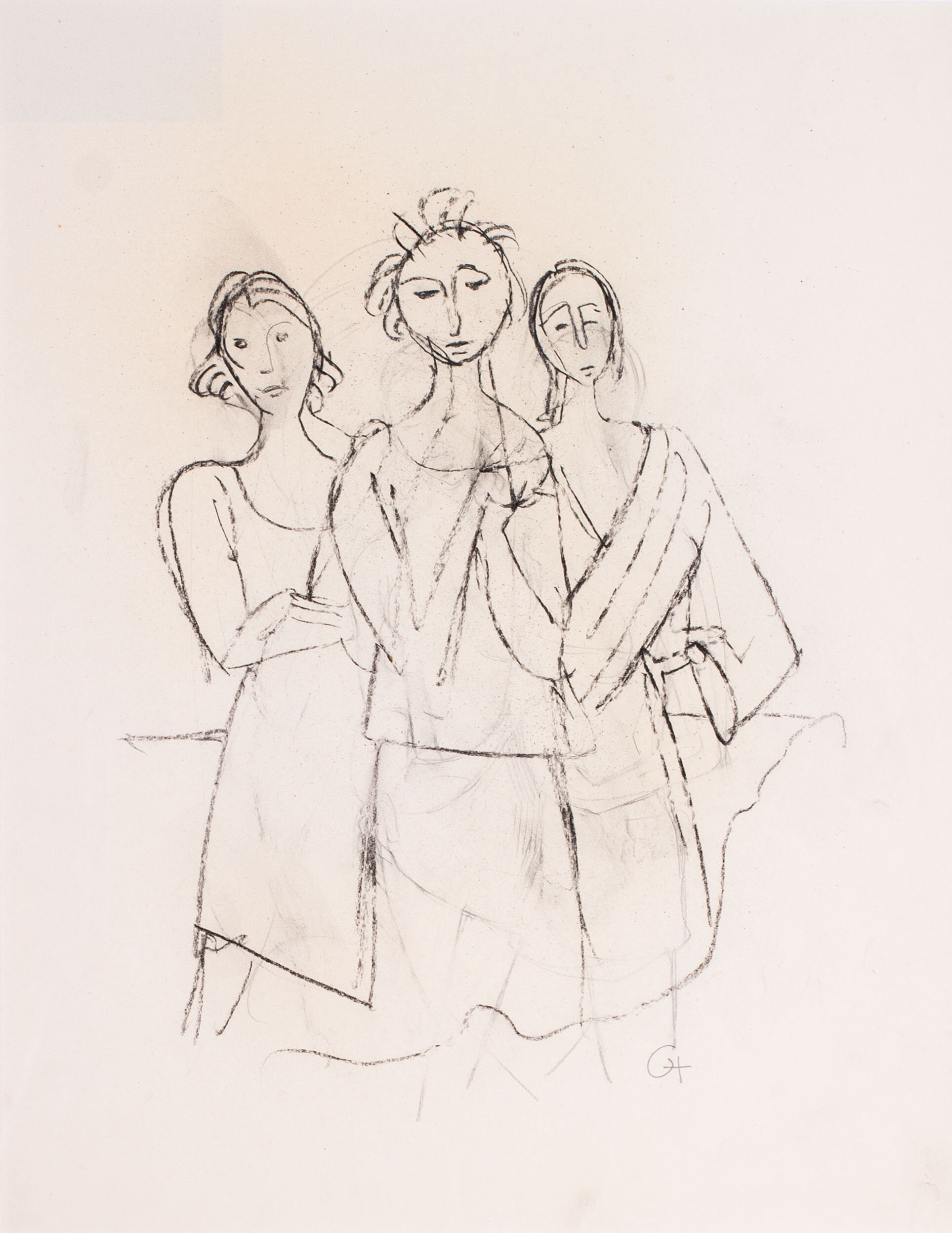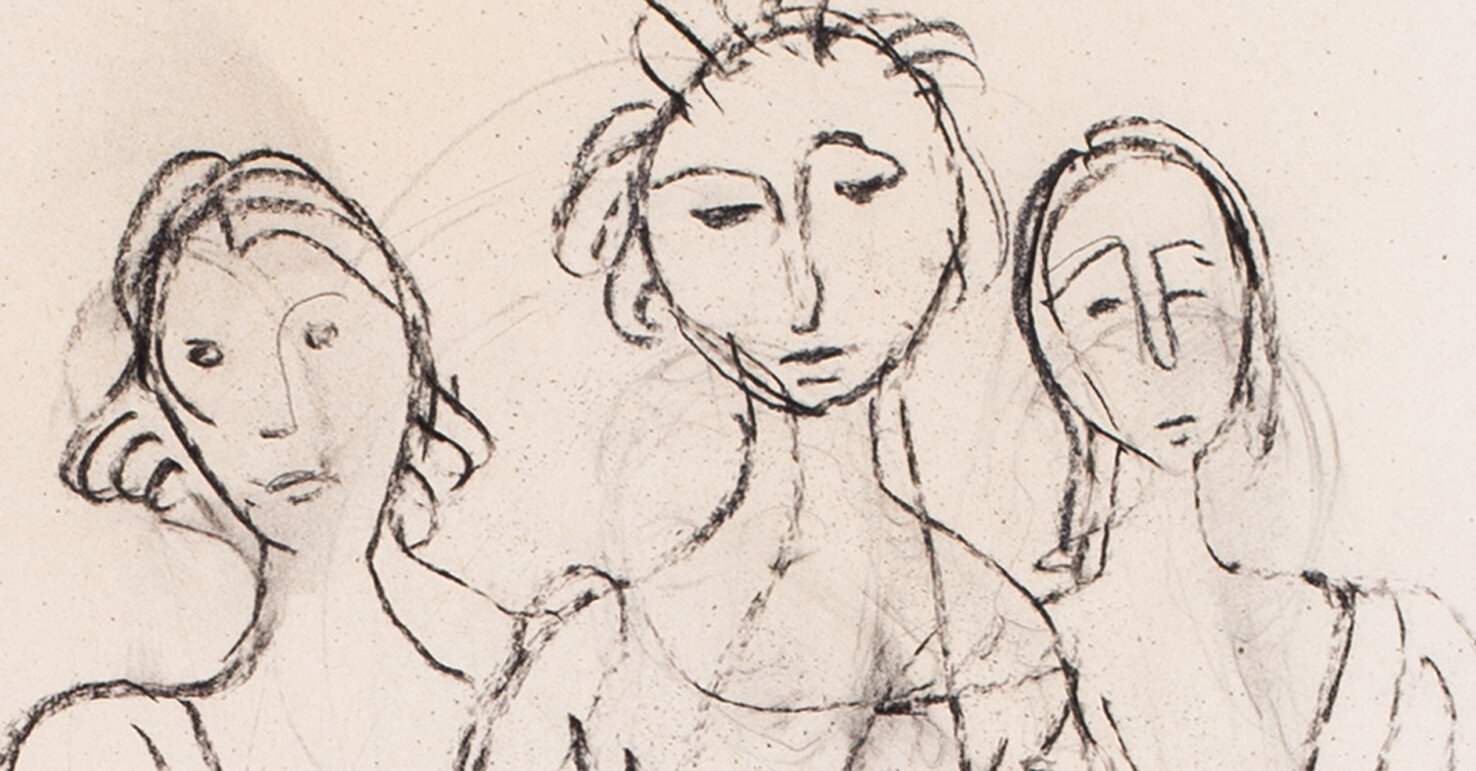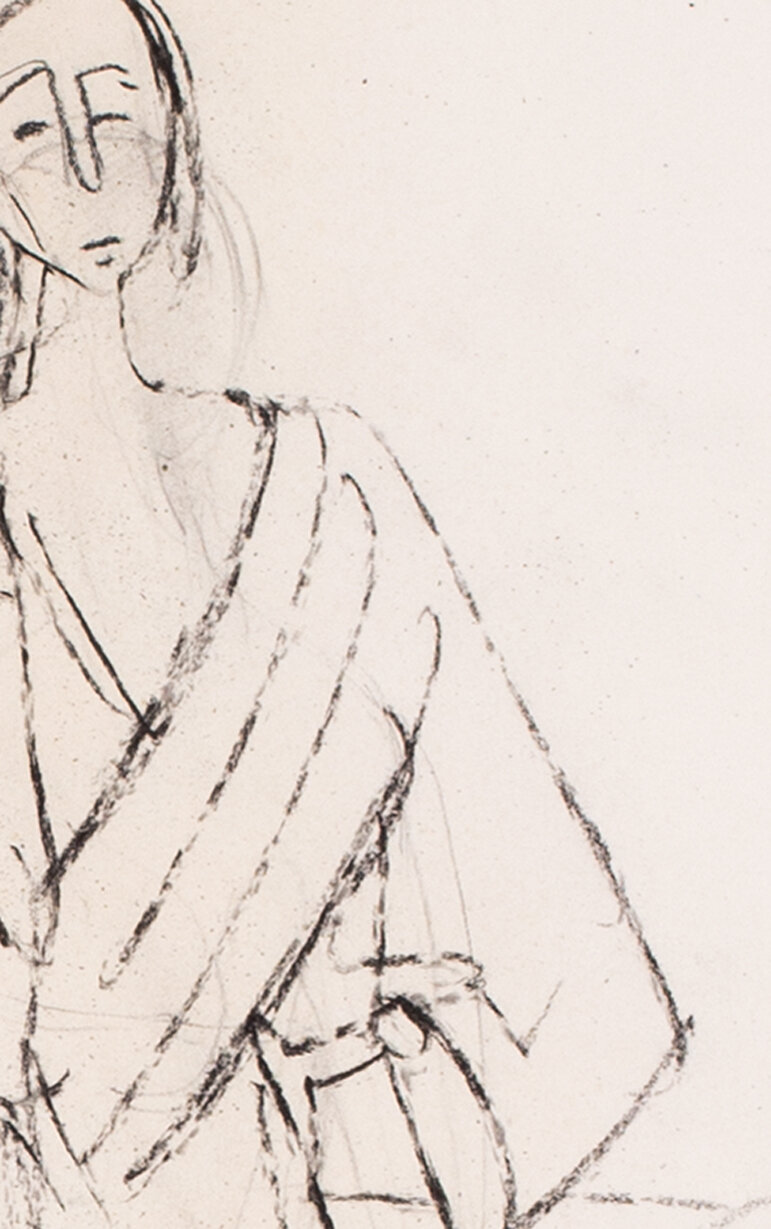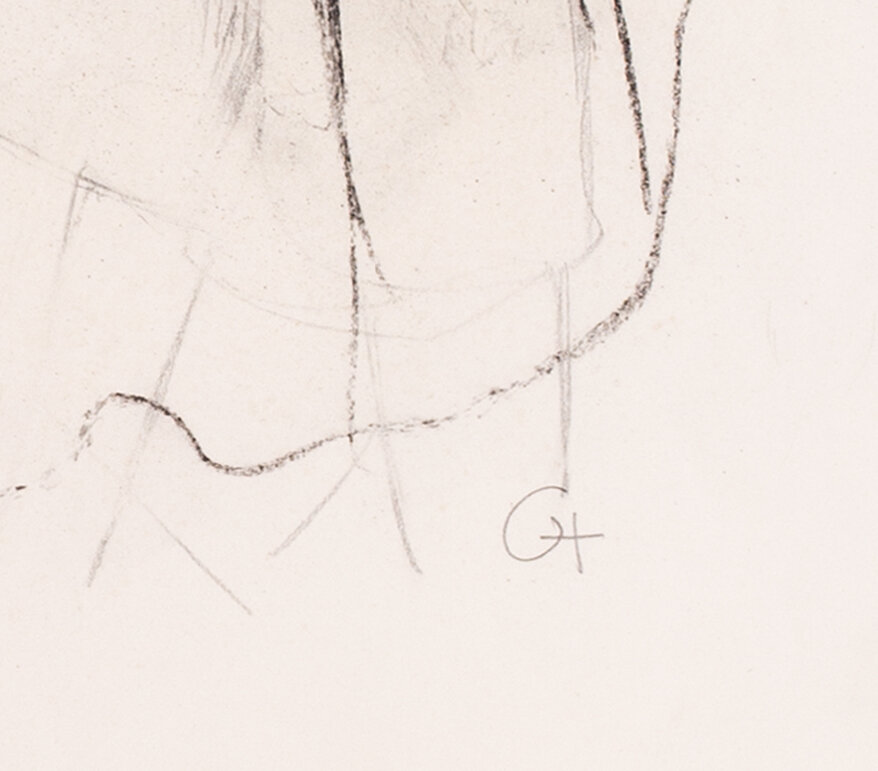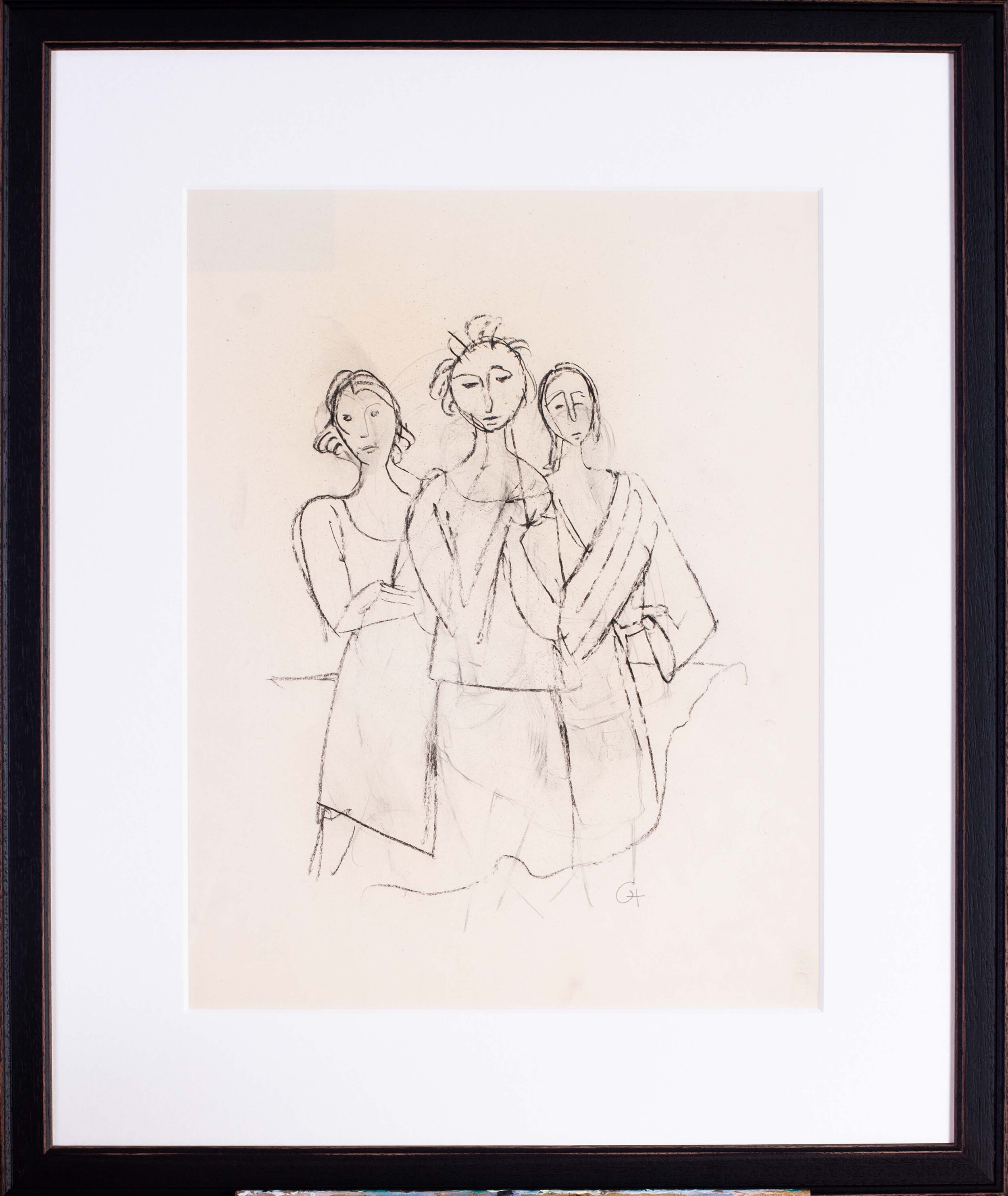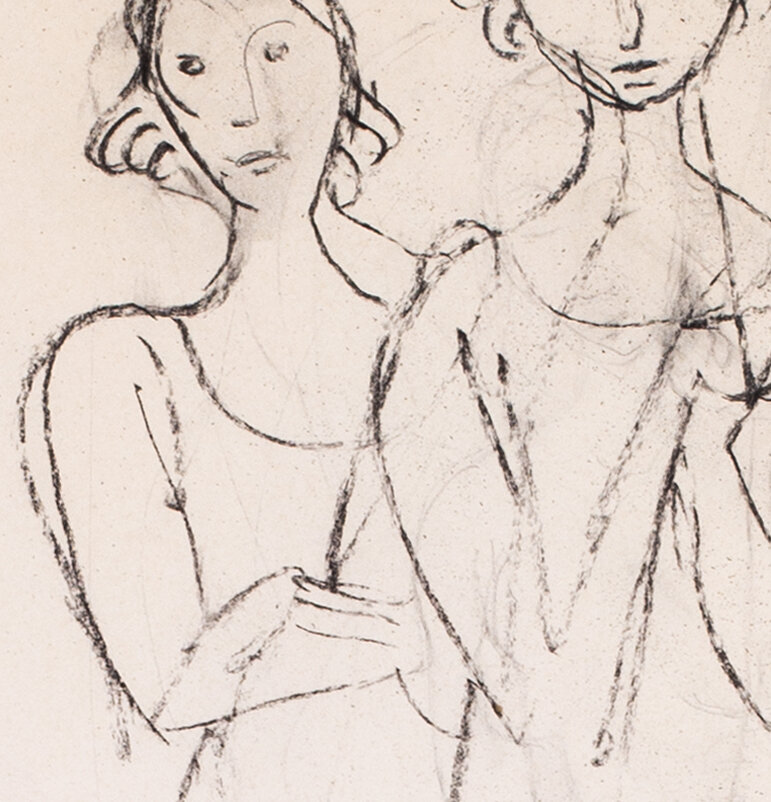Carl Hofer, 'Die Badegaste II (The bathers)'
Carl Hofer (German, 1875 – 1955)
Die Badegaste II (The bathers)
Black crayon on paper
19.1/4 x 15 in. (49 x 38 cm.)
With studio stamp (on the reverse) and signature of the artist’s wife Elizabeth Hofer
Provenance: These works come from the artist’s second wife Elizabeth and from then by descent.
Carl Hofer was a German expressionist painter and the director of the Berlin Academy of Fine Arts. One of the most important painters of the Expressionist movement, his work was among those that was considered degenerate art by the Nazis. He studied in Karlsruhe under Hans Thoma. He first visited Paris in 1899 making acquaintance with Julius Meier-Graefe. In 1902 he studied in Stuttgardt and became friends with the sculptor Hermann Haller. His wife Mathilde Scheinberger was Jewish but later joined the Protestant faith. They travelled around Europe to Rome and Paris where he was influenced by Paul Cezanne and Pablo Picasso. In 1908 he showed his work at the Berlin Succession founded by Max Liebermann. In 1913 he became member of the New ‘Freie Seccession’ and was represented at its first exhibition in 1914 with Liebermann, Erich Heckel, Ernst, Ludwig, Kirchner, Max Pechstein and Karl Schmidt-Rottluff. After the first World War he became Professor at the College of Fine Arts in Charlottenburg. During the 20s Hofer represented his own style which was later referred to as ‘Magic Realism’. After a love affair, Carl and Mathilde lived separately but remained married. With the rise of the Nazi party he was fervently against the movement writing articles such as ‘Fascism, the dark reaction’ which were published by the Communist newspaper ‘Welt am Abend’. The Nazis claimed he was a Jew and defamed him on a poster in 1933 with Oskar Schlemmer. In the degenerate art exhibition in 1937, the Nazis represented 8 of his works as a propaganda exercise and in 1938 he was expelled from the Prussian Academy of Arts because of his marriage to Mathilde. He later divorced her but was still no longer allowed to sell his works. He married his lover Elizabeth Schmidt and the ban was lifted. Sadly his ex wife was deported to Auschwitz and was killed in November 1942. After World War 2 he regained his artistic prestige receiving awards and honorary doctorates and was very involved in the construction of the Berlin Academy of Fine Arts. Many of his works hang in modern art galleries and collections such as the Museum of Modern Art in New York, Kunsthalle Mannheim, Germany and Bavarian State Picture Collection, among many others. By the time of his death in 1955 he was considered one of the greatest living artists of his time.
Carl Hofer (German, 1875 – 1955)
Die Badegaste II (The bathers)
Black crayon on paper
19.1/4 x 15 in. (49 x 38 cm.)
With studio stamp (on the reverse) and signature of the artist’s wife Elizabeth Hofer
Provenance: These works come from the artist’s second wife Elizabeth and from then by descent.
Carl Hofer was a German expressionist painter and the director of the Berlin Academy of Fine Arts. One of the most important painters of the Expressionist movement, his work was among those that was considered degenerate art by the Nazis. He studied in Karlsruhe under Hans Thoma. He first visited Paris in 1899 making acquaintance with Julius Meier-Graefe. In 1902 he studied in Stuttgardt and became friends with the sculptor Hermann Haller. His wife Mathilde Scheinberger was Jewish but later joined the Protestant faith. They travelled around Europe to Rome and Paris where he was influenced by Paul Cezanne and Pablo Picasso. In 1908 he showed his work at the Berlin Succession founded by Max Liebermann. In 1913 he became member of the New ‘Freie Seccession’ and was represented at its first exhibition in 1914 with Liebermann, Erich Heckel, Ernst, Ludwig, Kirchner, Max Pechstein and Karl Schmidt-Rottluff. After the first World War he became Professor at the College of Fine Arts in Charlottenburg. During the 20s Hofer represented his own style which was later referred to as ‘Magic Realism’. After a love affair, Carl and Mathilde lived separately but remained married. With the rise of the Nazi party he was fervently against the movement writing articles such as ‘Fascism, the dark reaction’ which were published by the Communist newspaper ‘Welt am Abend’. The Nazis claimed he was a Jew and defamed him on a poster in 1933 with Oskar Schlemmer. In the degenerate art exhibition in 1937, the Nazis represented 8 of his works as a propaganda exercise and in 1938 he was expelled from the Prussian Academy of Arts because of his marriage to Mathilde. He later divorced her but was still no longer allowed to sell his works. He married his lover Elizabeth Schmidt and the ban was lifted. Sadly his ex wife was deported to Auschwitz and was killed in November 1942. After World War 2 he regained his artistic prestige receiving awards and honorary doctorates and was very involved in the construction of the Berlin Academy of Fine Arts. Many of his works hang in modern art galleries and collections such as the Museum of Modern Art in New York, Kunsthalle Mannheim, Germany and Bavarian State Picture Collection, among many others. By the time of his death in 1955 he was considered one of the greatest living artists of his time.
Carl Hofer (German, 1875 – 1955)
Die Badegaste II (The bathers)
Black crayon on paper
19.1/4 x 15 in. (49 x 38 cm.)
With studio stamp (on the reverse) and signature of the artist’s wife Elizabeth Hofer
Provenance: These works come from the artist’s second wife Elizabeth and from then by descent.
Carl Hofer was a German expressionist painter and the director of the Berlin Academy of Fine Arts. One of the most important painters of the Expressionist movement, his work was among those that was considered degenerate art by the Nazis. He studied in Karlsruhe under Hans Thoma. He first visited Paris in 1899 making acquaintance with Julius Meier-Graefe. In 1902 he studied in Stuttgardt and became friends with the sculptor Hermann Haller. His wife Mathilde Scheinberger was Jewish but later joined the Protestant faith. They travelled around Europe to Rome and Paris where he was influenced by Paul Cezanne and Pablo Picasso. In 1908 he showed his work at the Berlin Succession founded by Max Liebermann. In 1913 he became member of the New ‘Freie Seccession’ and was represented at its first exhibition in 1914 with Liebermann, Erich Heckel, Ernst, Ludwig, Kirchner, Max Pechstein and Karl Schmidt-Rottluff. After the first World War he became Professor at the College of Fine Arts in Charlottenburg. During the 20s Hofer represented his own style which was later referred to as ‘Magic Realism’. After a love affair, Carl and Mathilde lived separately but remained married. With the rise of the Nazi party he was fervently against the movement writing articles such as ‘Fascism, the dark reaction’ which were published by the Communist newspaper ‘Welt am Abend’. The Nazis claimed he was a Jew and defamed him on a poster in 1933 with Oskar Schlemmer. In the degenerate art exhibition in 1937, the Nazis represented 8 of his works as a propaganda exercise and in 1938 he was expelled from the Prussian Academy of Arts because of his marriage to Mathilde. He later divorced her but was still no longer allowed to sell his works. He married his lover Elizabeth Schmidt and the ban was lifted. Sadly his ex wife was deported to Auschwitz and was killed in November 1942. After World War 2 he regained his artistic prestige receiving awards and honorary doctorates and was very involved in the construction of the Berlin Academy of Fine Arts. Many of his works hang in modern art galleries and collections such as the Museum of Modern Art in New York, Kunsthalle Mannheim, Germany and Bavarian State Picture Collection, among many others. By the time of his death in 1955 he was considered one of the greatest living artists of his time.





